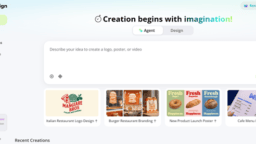Initiatives, including business intelligence, assist organizations in making better business decisions. The development of AI, especially generative AI, is now having an impact on the ever-changing BI environment.
By 2025, statistics for business intelligence indicate that the global business intelligence software market will drive US$29.51 billion.
Companies still must, however, enable precise and perceptive data set discoveries and report on important business indicators on a regular basis. Business intelligence data warehousing tools, along with Content Optimization Tools, continue to be crucial technologies for data-driven organizations across all industries, assisting in supplying such capabilities.
The market for business intelligence software has seen a significant increase in technological alternatives in recent years due to the introduction of several new tools. With vast options available, it’s tough to select a BI tool from a data warehousing company. Prepare to improve your decision-making skills by working with the best BI experts.
What Makes a BI Tool Great for Growing Businesses?

- Scalability: The BI and data warehousing solution should be scalable as your company expands and be able to manage the volume of data your organization now handles.
- Ease of use: Look for a BI solutions tool with a user-friendly interface & intuitive user interface. This is how it reduces the learning curve for the team & encourages adoption.
- Integration capabilities: Make sure that the product is compatible with your current data sources, including cloud platforms, CRM systems, and databases.
- Real-time data processing: Choose a business intelligence and data warehousing tool that allows you to maintain a comprehensive and up-to-date view of all of your relevant company data.
- Cost-effectiveness: Selection of a business intelligence data warehousing BI tool is necessary, which is effective in terms of cost and ideal for companies seeking flexibility in their operations.
“The best insights are the ones everyone can reach. When business intelligence feels as natural as checking your morning news, adoption soars and teams thrive.”IBM
For some firms, the expense of constructing and maintaining traditional data warehouses may be unaffordable. In the end, business intelligence warehousing solutions offer a more economical approach to data management, but only if they incorporate the essential components of business intelligence mentioned above.
Top BI Tools to Watch in 2025

1. Microsoft Power BI
A collection of business intelligence data warehousing tools called Microsoft Power BI is used to analyze data and produce dynamic dashboards and reports. It enables users to share insights with others, visualize and discover their data, and connect to multiple data sources. The tool is ideal for mid-to-large companies already using Microsoft tools.
Key features:
- Seamless integration with the Microsoft ecosystem: Power BI offers a smooth entry into the realm of business intelligence, making it especially suitable for novices who are already familiar with Microsoft products.
- AI-powered insights: Make use of your data’s built-in AI capabilities to identify trends, patterns, and anomalies as well as to forecast future events.
- Custom dashboards and interactive reports: To effectively present your data, select from a large range of visual elements, including maps, charts, graphs, and custom visuals.
2. Tableau
A well-known program for data visualization, business data intelligence, and warehousing, Tableau helps consumers see and comprehend their data. Users may share their ideas with others, connect to many data sources, and build charts and graphs by dragging and dropping variables. The Tableau tool has a user-friendly interface and the capacity to manage big datasets. Teams with data expertise and businesses focused on data storytelling use this tool for their business benefits.
Key features:
- Powerful data visualization: Bar/line/pie charts, maps, and scatter plots are a few features Tableau offers.
- Strong community and support: The Tableau community is full of intelligent individuals from a variety of backgrounds, and continues to be a friendly and secure place for anybody who wants to be a part of it.
- Extensive third-party data source support: Extensions use web apps made by other developers to increase dashboard capabilities.
3. Looker (Part of Google Cloud)
A cloud-based BI warehousing tool for data exploration, analysis, and visualization is called Looker. It enables all sets of users to access, comprehend, and make decisions based on data. It was purchased by Google in 2019 and is currently a component of the Google Cloud Platform. The tool is ideal for cloud-first businesses & companies that require cloud-first solutions.
Key features:
- Real-time analytics: The tools offer real-time analytics to the business with less effort.
- Data modeling layer with LookML: It enables users to specify metrics and data relationships using a proprietary modelling language.
- Native integration with Google Cloud: You can discover and share insights in real time with Looker, an enterprise platform for business intelligence, & embedded analytics.

4. Qlik Sense
A self-service platform for business intelligence and data analytics, Qlik Sense business intelligence warehouse enables users to explore and visualize data in an easy manner. In contrast to conventional BI tools, it analyses correlations between data points using an associative engine, allowing users to get insights through interactive exploration. This kind of tool is ideal for organizations with complex data sets & companies that require multi-cloud options.
Key features:
- Associative data model: Qlik Sense sets itself apart with the related data model, enabling users to search data without setting preset queries.
- Augmented analytics: It employs AI to help in preparing data & generating insights.
- Hybrid cloud deployment: Qlik provides a range of business intelligence and data analytics tools, such as its cloud-based Qlik Sense.
5. Zoho Analytics
A cloud-based BI tool called Zoho Analytics assists companies of all sizes in connecting, organizing, analyzing, and visualizing their data in order to obtain insights and make choices based on facts. Zoho Analytics is used for small to medium businesses & teams with a lack of technical skills.
Key features:
- Affordable and user-friendly: Due to its affordability and ease of use, Zoho Analytics is a particularly appealing BI solution for novices and small enterprises.
- Integration with Zoho Suite and other apps: The integration of Zoho Analytics is smooth with Zoho Suite and other applications.
- AI-powered data preparation: Self-service data management and preparation is provided by Zoho DataPrep.
6. Domo
A cloud-based software called Domo assists companies in connecting, integrating, visualizing, and analyzing data from several sources. By making data available and intelligible to all members of an organization, not just data analysts, business intelligence ROI statistics seek to democratize data. This is a good option for firms looking for faster deployment & teams that require mobile accessibility.
Key features:
- All-in-one BI platform: Domo is a cloud-based ALL-IN-ONE BI platform for data visualization and BI that assists companies in transforming unstructured data into insights.
- Real-time dashboards: Real-time alerts, dynamic reports, and customizable dashboards let users explore their data and find important business insights.
- Mobile-first interface: Customers value Domo’s mobile-first strategy because it guarantees data accessibility and sends personalised notifications according to user preferences.

Emerging BI Trends in 2025
“Artificial intelligence is no longer a distant promise – it’s the engine behind the next wave of business intelligence. In 2025, AI won’t just crunch numbers; it will uncover hidden patterns and give leaders answers before they know what questions to ask.”nriparts.com
- Rise of AI-powered analytics: AI is actively changing the BI methodology in a positive way. AI improves corporate operations by offering natural language processing, data analysis, automated insights, and predictive analytics. Consequently, AI-powered BI is bursting with new opportunities for companies to improve decision-making and spur expansion.
- Increased focus on self-service BI: The way businesses manage data is being revolutionized by self-service BI. By 2025, we anticipate that more non-technical users in data warehousing companies will be able to access, analyze, and visualize data on their own, thanks to this trend. The strong incorporation of AI & ML methods into self-service BI applications is what is driving this trend. This technology makes it easy to get insights by automating data preparation and analysis without requiring a deep understanding of technical matters.
- Data governance and compliance are becoming a priority: Business intelligence (BI) is developing quickly, and the emergence of real-time analytics is one of the key themes influencing 2025. This trend is caused by the fact that real-time data is necessary for businesses to make faster and better-informed decisions.
- Real-time and predictive analytics are gaining ground: Users may access dashboards, charts, and analytics directly within their bespoke apps, CRMs, or ERPs when they have integrated BI. Users may view the details from within their workspace, eliminating the need for them to transfer between tools in order to obtain the report.
- Embedded BI in everyday business tools: An increasingly important part of future-focused business intelligence industry statistics solutions is embedded analytics. A wider audience will have access to analytics as BI technologies become more user-friendly, enabling people to engage with data in a common language.
How to Choose the Right BI Tool for Your Business

- Define your business goals and data needs: Setting specific goals and objectives is essential before putting a business intelligence system into action. Create a thorough implementation strategy that includes deadlines, the distribution of resources, and important stakeholders. Involve executive sponsors, IT departments, and business users to match the implementation plan with corporate objectives.
- Evaluate your team’s technical skill level: Before selecting the right BI tool for the business, assess your team’s technical skill level & specifications, and expertise in advanced solutions.
- Consider integration with existing systems: Accurate and dependable data is essential to a successful business intelligence data warehousing solution. Determine which data sources, such as databases, spreadsheets, or third-party apps, need to be merged first.
- Review pricing models and scalability options: Robust features are provided by an affordable platform without breaking the bank. Scalability is essential since your BI platform should expand together with your organization. Select a platform that will enable you to begin small and grow as necessary without breaking the bank.
- Prioritize support and community resources: When implementing a new BI solution, a thriving user community and dependable customer support are essential. Choose a tool that prioritizes support & community resources.
Ready to Level Up? Choose the BI Tool That Grows with You

In summary, carefully consider your organization’s unique needs, technical infrastructure, financial constraints, and technical expertise when selecting a BI tool. The business intelligence adoption statistics are high & each tool has advantages and disadvantages, so choose the one that best suits your needs to get the most out of your data.






